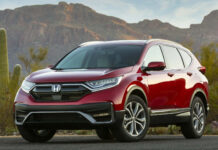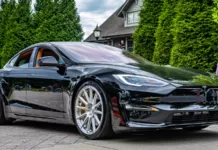Electric Vehicles are notoriously limited in their range compared to internal combustion cars. This means that most EVs cannot be relied on to travel long distances without stopping to charge. But Teslas are undeniably much better than other electric cars in this regard. For example, the Tesla Model S has outperformed many electric vehicles in performance and range despite being many years old in the market. Let’s look at why Teslas have a longer range than other EVs.
Why do Teslas boast more range?
Teslas proudly boasts the highest range in the electric vehicle market. The Tesla Model S took electric cars from being a novelty to a common car on the roads of the United States. Most gasoline car owners switched to electric cars as a result of Tesla’s long range.
The 2012 Model S, with a small battery pack of 60kWh, had an estimated range of 208 miles. But by 2016, the 1st generation Model was upgraded to a 0kWh battery pack and provided a range of 62 miles. Today, the lowest spec 2nd generation Model S comes with a 70kWh battery pack with a range of 234 miles, and the top-spec 100kWh battery has a capacity of 315 miles.
Primarily, the electric car range is dependent on the size of the battery pack. Other factors that contribute to the long-range are electrical motor power rating, drive wheel configuration, car aerodynamics, tire design, recovery of waste energy at the brakes, and efficiency of ancillary car functions like electric windows, heating and headlights.

Tesla cars have way more high-powered battery tech than its competitors and can therefore afford to take more risks than other electric car companies. The Tesla company has been busy improving their battery power and efficiency for more than a decade. They have used many advanced software to make the batteries more efficient. This, combined with aerodynamics and by ditching multi-gear transmissions for dual motors, has enabled them to reach their high battery efficiency. Their dual motors are programmed to send varying power ratios to the front and rear vehicles.
Tesla has been known to produce batteries that are high in quality and dense than others. Moreover, they build batteries from materials that are much cheaper than normal. Most automobile companies stuck to the norm of using nickel and cobalt along with Manganese to create batteries that are costly, less efficient and have less range. Yet, these traditional batteries may have a potentially longer life than a Tesla battery of cheaper material.
Tesla uses a different and more advanced battery technology that includes aluminum instead of Manganese. This results in more cost-effective and efficient batteries that are capable of longer range. A downside, however, is a shorter life cycle and higher fire risk. And by this, Tesla seems to be willing to compromise with their battery life to achieve higher efficiency and range.
Until Tesla, most buyers were hesitant to buy electric cars as they were worried about running out of charge in the middle of the road. Tesla made a huge leap in the electric vehicle industry by launching a commercial EV sedan, while all other competing cars were small cars with small battery packs. The sedan had an original design and not one copied from an internal combustion car. So this was one reason why Tesla stood out.
The Model S car likewise was designed from scratch. The battery pack was placed along the floor of the vehicle rather than in the boot or where the fuel tank would normally sit. So by positioning a long flat battery on the floor of the car rather than a box-shaped battery sitting in the car, the Model S was able to house a much larger battery than a regular EV. Hence, The Model S had double the range of competing Volvo or Ford electric vehicles.
Tesla has used this flat under-floor battery design in almost all their electric vehicles except for the Roadster, where the battery position is behind the seats. The underfloor battery provides a lower center of gravity and, therefore, easier and better handling. This design has enabled Teslas to have much more range than other electric vehicles.
The Model X also has a range of 292 miles for their 90kWh battery pack. This is because of the larger electrical motors in the 100kWh battery.

The 1st generation Model 3 of 2017 comes with a battery pack size of 50-75kWh and different drive-wheel configurations. The smaller electric motor powers in the Model 3 provide the longest range of all Teslas at 220-325 miles. These cars have the longest ranges except for the 250kWh Cyber Truck that is yet to be released.
Conclusion
The reason for Teslas’ advantage of long ranges is due to their unique car designs and models that do not copy the usual structure of internal combustion cars. And another reason is their highly efficient and dense battery packs that can have a longer range with less charge. Their aerodynamic designs and dual motor systems also play a major part. However, it would not be long before other competing electric car companies catch up. And it would be left to see if Tesla can bring up more tricks to secure its spot in the EV market.
Please read this article for the cost savings of a hybrid.

















